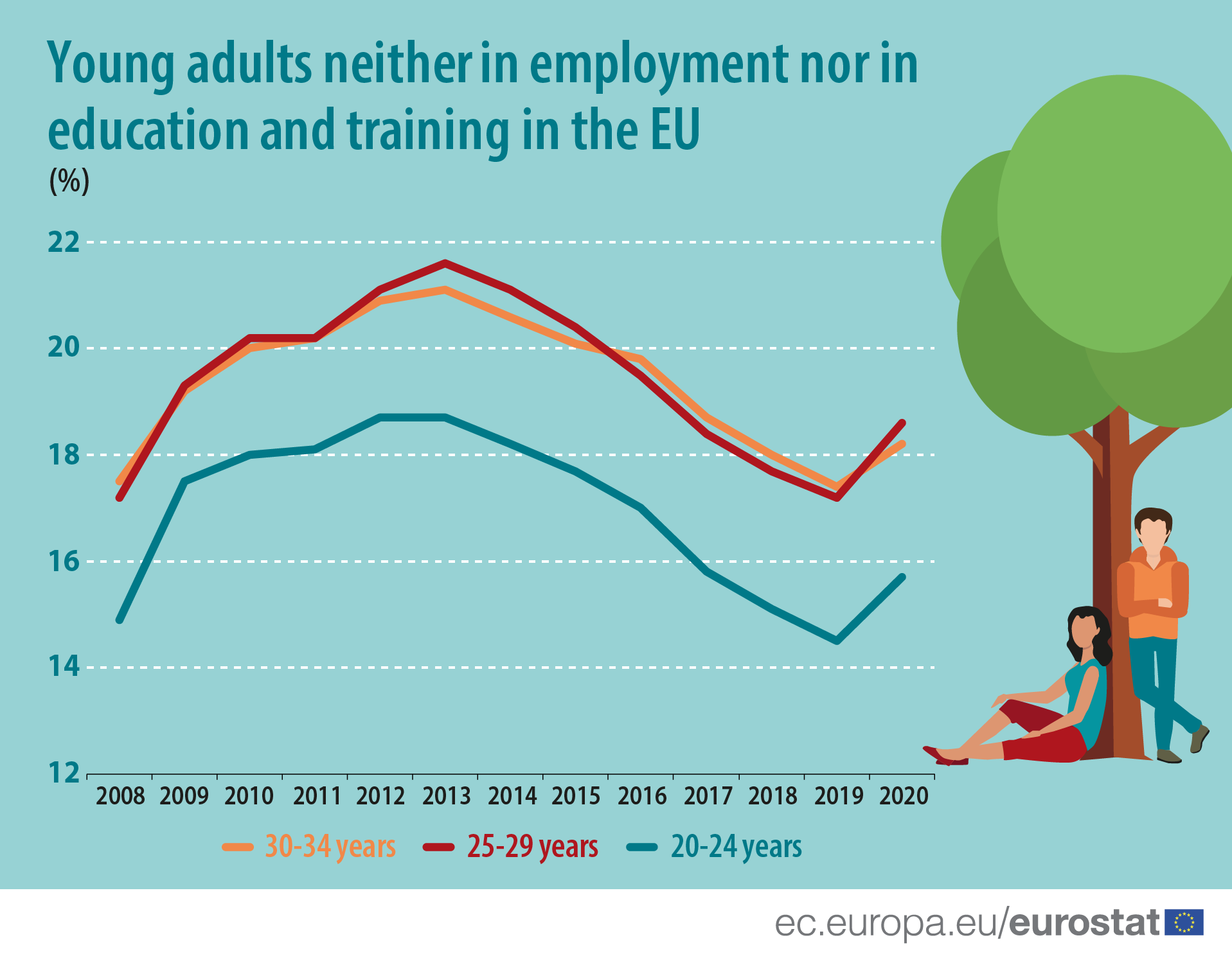News
14 July 2021 |News
Over 1 in 6 young adults not in employment or education

Photo: eurostat
Over one in six (17.6 %) of young adults aged 20 to 34 were neither in employment nor education and training (NEET) in 2020 in the European Union (EU), an increase of 1.2 percentage points over 2019.
On the occasion of the World Youth Skills Day Eurostat looks at the changes in the labour market participation of young adults in 2020. The latest results from the EU labour force survey show that following a falling trend in the share of young people not in employment or education since 2013, the year 2020 saw an upwards turn.
All three considered age groups recorded a higher share in 2020 compared to 2019: 15.7 % for people aged 20-24 (up by 1.2 percentage points (pp)), 18.6 % for those aged 25-29 (up by 1.4 pp), and 18.2 % for those aged 30-34 (up by 0.8 pp). This sudden change reflects the economic downturn related to the COVID-19 pandemic.
The NEET proportion of 20-24 year-olds remained systematically lower than the corresponding rates for people aged 25-29 or 30-34 during the whole of the period 2008-2020. This, at least to some degree, reflects the relatively high proportion of students who remained in education and training at this age.
Young women more likely to be not in education nor employment
Among people aged 20-34, over one in five (21.5%) young women and below one in seven (13.8 %) young men were NEET, but these shares varied considerably across the EU Member States.
The lowest NEET rates were in the Czech Republic (5.6 % of young men) and in the Netherlands (9.5 % of young women). In contrast, the highest NEET rates were recorded in Italy for both men and women, at 24.0 % and 35.0 % respectively.
In 2020, the share of women not in employment, education or training was higher in every country as compared to men. There were eight EU Member States where the proportion of young female NEETs was at least 10.0 pp higher than the corresponding share for young men.
Among these, the difference between the sexes was within the range of 10.5-14.7 pp in Bulgaria, Italy, Estonia and Poland, rising to 17.5-24.2 pp in Romania, Slovakia, Hungary and Czech Republic. The lowest gender gaps were found in Portugal (0.6 pp), Lithuania (1.0 pp), Luxembourg (1.6 pp) and Sweden (1.8 pp).
Original news available HERE
Source: ec.europa.eu/eurostat/





